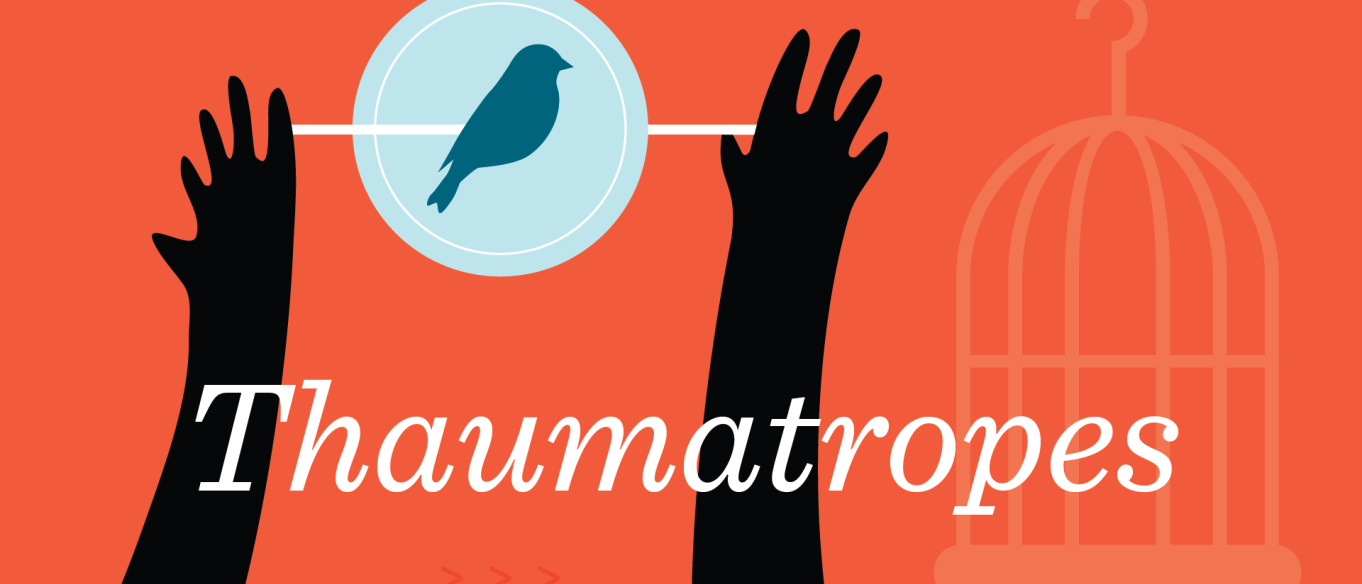
Have you ever wondered how cartoons started? Discover an early form of animation by making a simple optical illusion to trick your brain!
Age: 6+
Time: 15 minutes
Topics: optical illusion, brain, vision
What you need:
- Pencil or pen
- Paper
- Crayons, markers, or colored pencils
- Tape
- Scissors
- Optional: Thaumatrope template (download and print)
What to do:
If you have a printer at home:
1. Print and cut out the template.
2. Color the two images however you like.
If you do not have a printer at home or wish to make your own images:
1. Cut out two squares of paper, approximately 2 inches by 2 inches.
2. Think of a simple object or image you could draw that has two parts, like a scoop of ice cream and a cone or a fish and a fishbowl.
3. Draw and color one part of the image on each square (for example, draw the ice cream on one square and the cone on the other square). These two images will be combined in the end, so think about how they will look if they are on top of one another. Where on the squares should you draw each part of the image so they will match up correctly when they are combined?
Once your images are drawn, colored, and cut out:
4. Tape them securely back to back (with the pictures facing out) at the top of the pencil or pen.
5. You now have a thaumatrope! To use it, hold it upright in front of you between the palms of your hands. Lightly roll the pencil back and forth between your hands so the two images flip back and forth.
- What happens when you spin it slowly?
- What happens when you spin it quickly?
6. Other ideas to try:
- Try it again with new pictures. How many can you create? Which images worked best?
- Try different colors. How did the new colors change how you perceived the image?
- Could you make a thaumatrope that shows one object moving, instead of two objects combining? How would you do it?
What’s happening?
A thaumatrope (THAW-muh-trope) toy creates an illusion based on how your brain processes information from your eyes. When you spin the thaumotrope slowly, you will see each image by itself. If you spin it fast enough, you no longer perceive them as two separate pictures but instead perceive the two on top of each other. The illusion is created when images are presented to your eyes faster than your brain can process them individually, so it combines them into a single image. This is also how flipbooks or movies on film work: they are made of individual images, or frames, which change so quickly from one to the next that your brain perceives them as one continuous moving image.

